Hebrew: חמנית מצויה, Arabic: دوار الشمس
| Scientific name: | Helianthus annuus L. | |
| Common name | Common Sunflower | |
| Hebrew name: | חמנית מצויה | |
| Arabic name: | دوار الشمس | |
| Plant Family: | Compositae / Asteraceae, מורכבים |
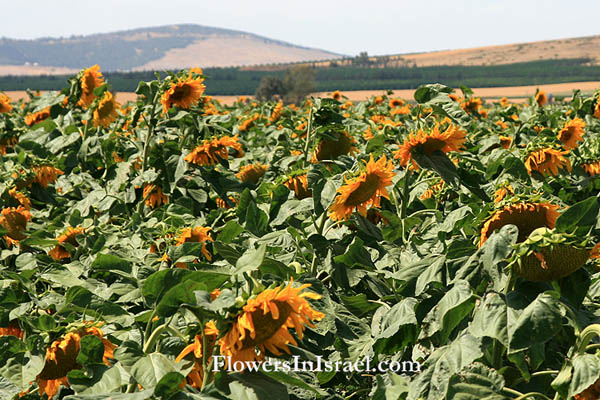
|
| Life form: | Annual | |
| Stems: | 100–300 cm; erect, rough, hairy | |
| Leaves: | Alternate, entire, dentate or serrate margin; rough on both sides | |
| Inflorescence: | Involucrate capitulum, a large flowering head | |
| Flowers: | Yellow ray-florets; disk-florets, bisexual, fertile, yellow, brown, purplish | |
| Fruits / pods: | Cypsela, edible seed | |
| Flowering Period: | May, June, July, August, September | |
| Habitat: | Disturbed habitats | |
| Distribution: | Mediterranean Woodlands and Shrublands, Semi-steppe shrublands | |
| Chorotype: | American | |
| Summer shedding: | Ephemeral |
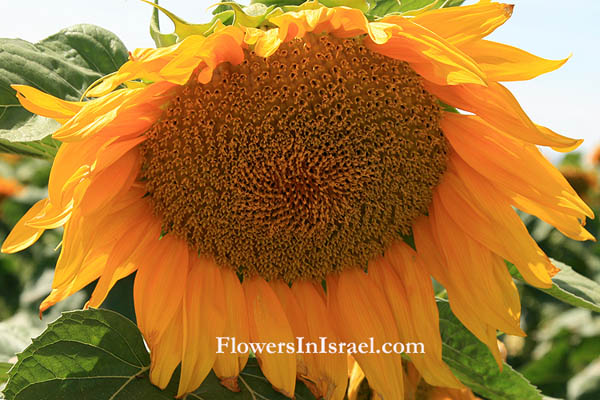
Derivation of the botanical name: Helianthus, Greek helios, the sun; anthos, a flower; sunflower. annuus, annual. The Hebrew name: חמנית, hamanit (New Hebrew), sunflower; formed from חמה (=sun), as loan translation of Helianthus, from Greek: helios (=sun) and antos (=flower) — the scientific name of this plant.
When one observes the heads of sunflowers, one notices two series of curves, one winding in one sense and one in another; the number of spirals not being the same in each sense. The number of spirals is in general either 21 and 34, either 34 and 55, either 55 and 89, or 89 and 144. They all belong to the Fibonacci sequence: 1, 2, 3, 5, 8, 13, 21, 34, 55, 89, 144, etc. The Fibonacci numbers fn are given by the formula f1 = 1, f2 = 2, f3 = 3, f4 = 5 and generally f n+2 = fn+1 + fn . In order to optimize the filling, it is necessary to choose the most irrational number there is, that is to say, the one the least well approximated by a fraction. This number is exactly the Golden Mean, or the Golden Ratio (The Golden Ratio is an irrational number approximating 1.6180). The corresponding angle, the golden angle, is 137.5 degrees. (It is obtained by multiplying the non-whole part of the golden mean by 360 degrees and, since one obtains an angle greater than 180 degrees, by taking its complement). With this angle, one obtains the optimal filling, that is, the same spacing between all the seeds. This arrangement forms an optimal packing of the seeds. 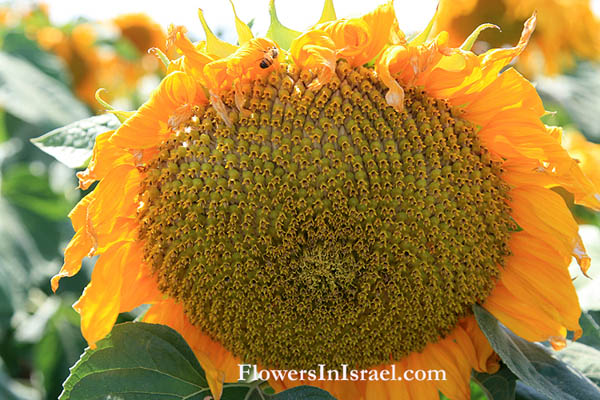
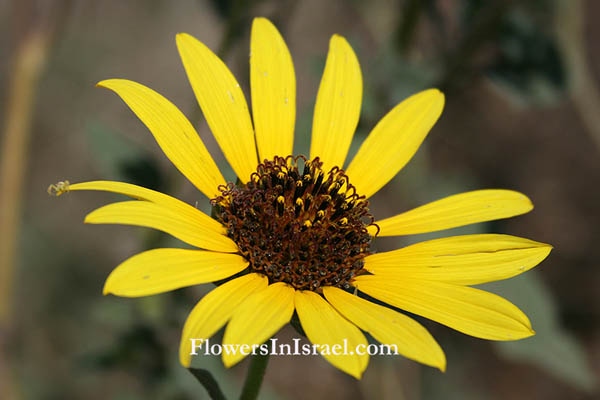
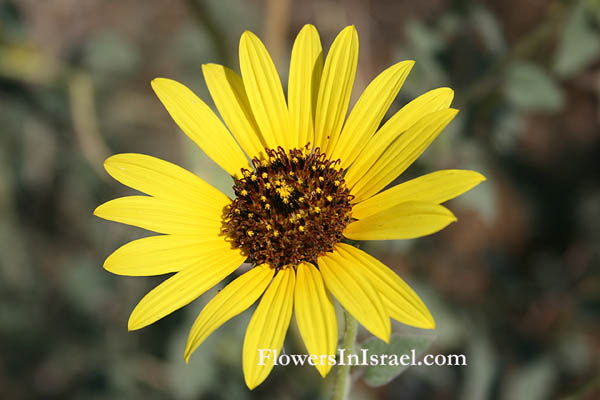
|